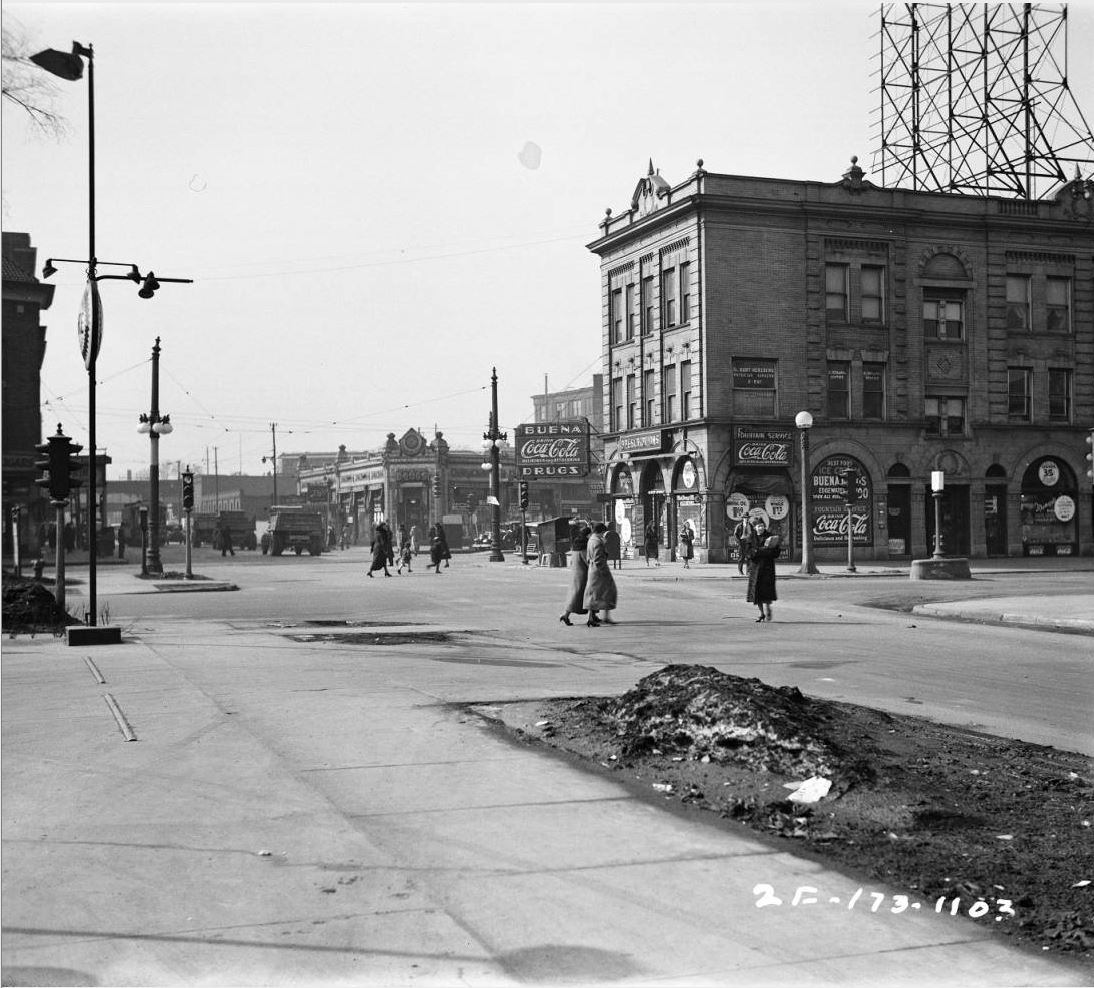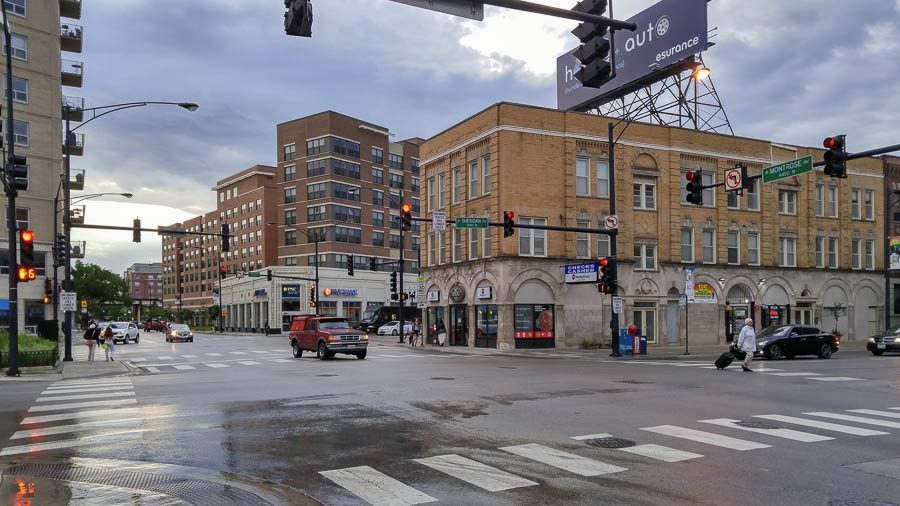Rolling Stone describes how Wrigleyville became Douchebag Central:
Chicagoans have strong feelings about Wrigleyville. While a local might have more nuanced thoughts on neighborhoods like Logan Square (gentrified, filled with hipsters, great places to eat) or Wicker Park (gentrified, filled with yuppies, great places to eat), say you're going to hang out near Wrigley Field, and you'll probably get a blank stare. You really go out of your way to visit there for two reasons: Cubs games and shows at the Metro, the area's long-running venue that has played host to everybody from Metallica in 1983 to Nirvana in 1989 and nearly every important Chicago band or artist from Ministry at the dawn of the city's burgeoning industrial music scene to Chance the Rapper in 2016. Joe Shanahan, who opened the venue in 1982, remembers a time when he needed to be escorted by security to his car after a late-night. Not so much because of the fans, but because it was a neighborhood in a big city in the 1980s. "It was scary," he says of his early days turning the former Swedish Community Center built in 1927. "But it was inexpensive."
But things change.
You know the story: people living on the fringe make the area seem attractive to people with money, the people with money move in and, soon to follow are the bars with 20 televisions all showing sports. Wrigleyville, already a strange neighborhood because of its cozy little ballpark and the cursed team that plays there, somehow seemed like a decent fit for a bunch of outcasts. It was normal to end up at the McDonald's across the street from the ballpark and see kids from whatever show let out ordering Big Macs alongside sloshed baseball fans. It was awkward, but both groups were strange in their own way: kids with the funky hairstyles and clothes, and the baseball fans that would cheer for a team that they know will only disappoint.
I'm not sure it's the most insightful view of how Wrigleyville has changed, but it's somewhat accurate.
It turns out, no one wants to buy ugly big houses in the far suburbs. This apparently comes as a shock to their owners:
The McMansion style, built between 2001 and 2007 and averaging 3,000 to 5,000 square feet, lacks the appeal with today's buyers compared to old vintage homes or large freshly built homes.
The realization is especially hard on homeowners trying to sell because when they bought the giant homes in the early 2000s, they thought of them as great investments, Feinstein said.
Then, the idea was that bigger was better because prices presumably would keep going up.
Now, housing analysts say the day of the McMansion has come and gone. An analysis just completed by Trulia shows that the amount buyers are willing to pay for McMansions over other homes has fallen 26 percent in just four years. As homes in general have been regaining value, McMansions have been losing appeal in comparison to others as the giants of the pre-crash years have aged.
No kidding. And no sympathy from me. Fools, money, etc.
Ah, I can finally take a few minutes to read through my backlog of articles, which have a common theme coming off this past week's events:
That, plus a tour of the Laguintas Brewery this afternoon (the one here, not the one in Petaluma), ought to keep me busy.
Because I need to read all of these and have to do my actual job first:
I'll get to these this evening. I hope.
Once again, here's a list of news items I haven't fully digested but want to when I have a few free minutes:
There's another major story that I'm following, about which I'll post in a few minutes.
Chicago historian John R. Schmidt frequently has "Then and Now" features where he shows a part of the city as it appeared when he was a kid against how it appears now. I just found a trove of historical photos produced by the Illinois Dept. of Transportation, including a few dozen from my neighborhood, so I can play the same game.
Here's the intersection of Sheridan, Broadway, and Montrose, looking west down Montrose, from March 1936, more than 80 years ago:

Here's this past Tuesday:

Though some of the details have changed, both buildings flanking the north side of Broadway still exist. But the Wilson Yard development, from 2006, has taken over most of the area between Broadway and the El tracks. And past the El, the mature trees have changed the character of Montrose.
Another thing I notice about photos of Chicago and other U.S. cities before about 1990: the haze. Starting in the 1970s in California and the 1980s elsewhere, governments cracked down on air pollution. Chicago in 1936 would have been intolerably polluted to Millennials. The top photo gives a hint of why.
What was to be the tallest building in the hemisphere, the Chicago Spire, now can't seem even to become a proper park because of the bickering:
When plans for the twisting downtown skyscraper known as the Spire died, so, too, did the project to turn a weedy nearby lakefront lot into a park named for Chicago's first non-native settler, Jean Baptiste Pointe DuSable.
And there doesn't seem to be a timeline for developing the 3-acre stretch on the north side of the Chicago River where it feeds into Lake Michigan into DuSable Park, as has been the plan for nearly three decades. The land has been designated as DuSable Park but is waiting to be developed into green space, a Chicago Park District spokeswoman said.
For years the park was linked to the Spire development, which would have used the park site as a temporary construction staging area while the skyscraper was built. But neither the Spire nor the park got developed.
Ah, well. Chicago was great once, and will be again. Just not yet.
On this day in 1954, the Supreme Court handed down Brown v Board of Education of Topeka, Kansas, which ended "separate but equal" education after finding that the two concepts are antagonistic. Also on this day in 1954, the City of Chicago announced plans for the Stateway Gardens housing project, which eventually replaced an African-American slum with a high-rise hell-on-earth housing African Americans. As historian John R. Schmidt comments, "Maybe the new public housing projects were an attempt to keep Black people on 'their side of the tracks.'" (They were; he's being sarcastic.)
A similar pattern exists today. Despite historic, unprecedented support for the LGBT community throughout most of the U.S., the right has taken on the non-existent issue of predators in bathrooms to win votes in an election year. The small minority of people who (a) care about this issue and (b) are afraid of gays nevertheless has support from latter-day Sheriff Clark figures like Texas Lt. Gov. Dan Patrick and other Republicans.
Progress is never smooth. I just wish people on the wrong side of history would get out of the way sometimes.
Some articles:
Today's other tasks include cleaning my house and writing code for about four hours.
Engineer Jeff Speck is dismayed that his home town, Lowell, Mass., is planning to replace an unattractive and un-walkable street with an equally-un-walkable design:
Imagine my surprise, then, when I came across an article earlier this month about the city’s plans for its southern gateway, the Lord Overpass. This site is particularly important to Lowell, being an area of major redevelopment as well as the key link from the train station (at right in the image below) to downtown (beyond the canal to the left). This collection of streets—a squared traffic circle floating above a highway—is due for reconstruction, and the city came up with the smart idea of putting the depressed highway back up at grade to create more of an urban boulevard condition.
So, let’s zoom in and describe what we see:
- Four lanes dedicated to motion straight through, just like the now-submerged highway;
- Three lanes dedicated to turning motions, two of which swoop around the edges in great curves;
- Two dedicated bus lanes, each about 17 feet wide, curb-to-curb. (A bus is 8 1/2 feet wide, so perhaps the goal is to squeeze two past each other?);
- Bike lanes that are partly protected, partly unprotected, and partly merged into the bus lanes;
- A collection of treeless concrete wedges, medians, and “pork chops” directing the flow of vehicles;
- No parallel parking on either the main road or any of the roads intersecting it; and
- Green swales lining the streets, resulting in set-back properties to the one side and open space to the other. (Note that the open space at the bottom of the drawing is too shallow to put a building on.)
The engineering drawings are horrifying. As Speck says, to the engineering firm Lowell hired, everything looks like a nail.